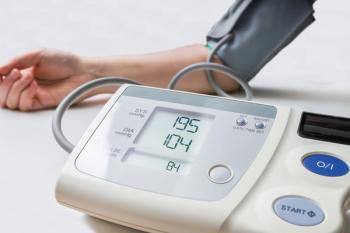
Higher recurrence risk, triptan use linked to perimenstrual migraine duration
Women with perimenstrual migraine attacks may also be at increased risk of medication overuse.
A recent study found that longer perimenstrual migraine attacks were associated with a higher risk of recurrence, as well as increased use of triptans, in women with menstrually related migraine (MRM), when compared with nonperimenstrual migraine attacks. As a result, investigators concluded this patient population was at a greater risk of overusing medication, further necessitating the need for prophylactic migraine treatment specific to women.
The study’s primary end point was migraine attack duration, and secondary end points included headache intensity, other related symptoms, as well as medication intake and how pain was dealt with. Over the course of the study, participants filled out an electronic diary (e-diary) to track headaches, corresponding author Daphne S. van Casteren, MD, PhD student, department of neurology, Leiden University Medical Center; division of vascular medicine and pharmacology, Erasmus University Medical Center, Rotterdam, The Netherlands, et al noted.
A total of 500 women completed the e-diary for at least 1 month, with a longer attack duration identified with perimenstrual migraine (n = 998), when compared to nonperimenstrual attacks (n = 4097), at 20.0 vs 16.1 hours, respectively (95% CI, 0.2-0.4). Perimenstrual migraine attacks were further associated with higher recurrence risk (OR, 2.4; 95% CI [2.0-2.9]), increased triptan intake (OR, 1.2 [95% CI, 1.1-1.4]), higher headache intensity (OR, 1.4 [95% CI, 1.2-1.7]), less pain coping (mean difference, –0.2 [95% CI, 1.1-1.4]), more pronounced photophobia (OR, 1.3 [95% CI, 1.2-1.4]), more pronounced phonophobia (OR, 1.2 [95% CI, 1.1-1.4]), as well as less aura (OR, 0.8 [95% CI, 0.6-1.0]).
READ MORE:
The e-diary was completed for 3 or more menstrual cycles by 396 of the 500 participants. Of these women, 221(56%) fit the criteria for MRM. Attack characteristics differences became more pronounced in women with MRM and women using oral contraceptives, although premenstrual syndrome PMS was not found to be more prevalent in women with MRM, as opposed to those without MRM, with rates of 11% and 15%, respectively.
“Physicians treating women with MRM should be aware of a long duration of perimenstrual attacks with a high risk of recurrence. Although women are more likely to report adverse events after the intake of triptans than men, they often need to take triptans repeatedly during their perimenstrual attacks,” van Casteren et al wrote. “Consequently, women with MRM are at increased risk for medication overuse. Physicians should be encouraged to prescribe preventive treatments in women with disabling perimenstrual migraine attacks to diminish duration and severity of attacks, because this may prevent the need for these women to use triptans during multiple subsequent days.”
Patients were between the age of 18 and 80 years, with a mean age of 40.5 years (standard deviation, 8.9). The e-diary was accessed each day via an email link, which asked patients to answer 6 to 31 questions on the absence or presence of headache, as well as 5 additional questions if the patient was menstruating, and questions on the presence of PMS using the Daily Record of Severity Problems scale.
Women who were pregnant, breastfeeding, postmenopausal, using continuous sex hormonal therapies, or reporting a current gynecological malignancy or a medical history of oophorectomy or hysterectomy were excluded from the study.
The study was limited in that recurrences were solely evaluated after triptan use, as opposed to following intake of painkillers or NSAIDs, as well as the inclusion of some women with chronic migraine. A lack of uniformity in the interpretation of “substantial PMS” and the inability to differentiate between subgroup analyses by diagnosis and contraceptive use were cited.
According to van Casteren and colleagues, further studies should be larger and investigate the role of sex hormones in migraine attacks for women. One of those efforts is currently recruiting, the WHAT! study (NCT04007874), which aims to test the hypothesis that continuous daily use of an oral contraceptive pill is an effective, well-tolerated preventive treatment for MRM.
“Ultimately, this knowledge will contribute to the development of an urgently needed female-specific prophylactic treatment intervening with sex hormones,” van Casteren et al wrote. “To begin with, the potential efficacy of existing hormonal treatments, such as combined oral contraceptives, in the prevention of migraine attacks should be. In addition, future large-scale daily e-diary studies are needed to assess symptoms belonging to the premonitory phase in women with migraine and to determine their contribution in the prediction of an upcoming migraine attack.”
Reference:
1. van Casteren DS, Verhagen IE, van der Arend BWH, van Zwet EW, MaassenVanDenBrink A, Terwindt GM. Comparing perimenstrual and nonperimenstrual migraine attacks using an e-Diary. Neurol. Published online September 7, 2021. doi:10.1212/WNL.0000000000012723
Newsletter
Get the latest clinical updates, case studies, and expert commentary in obstetric and gynecologic care. Sign up now to stay informed.











